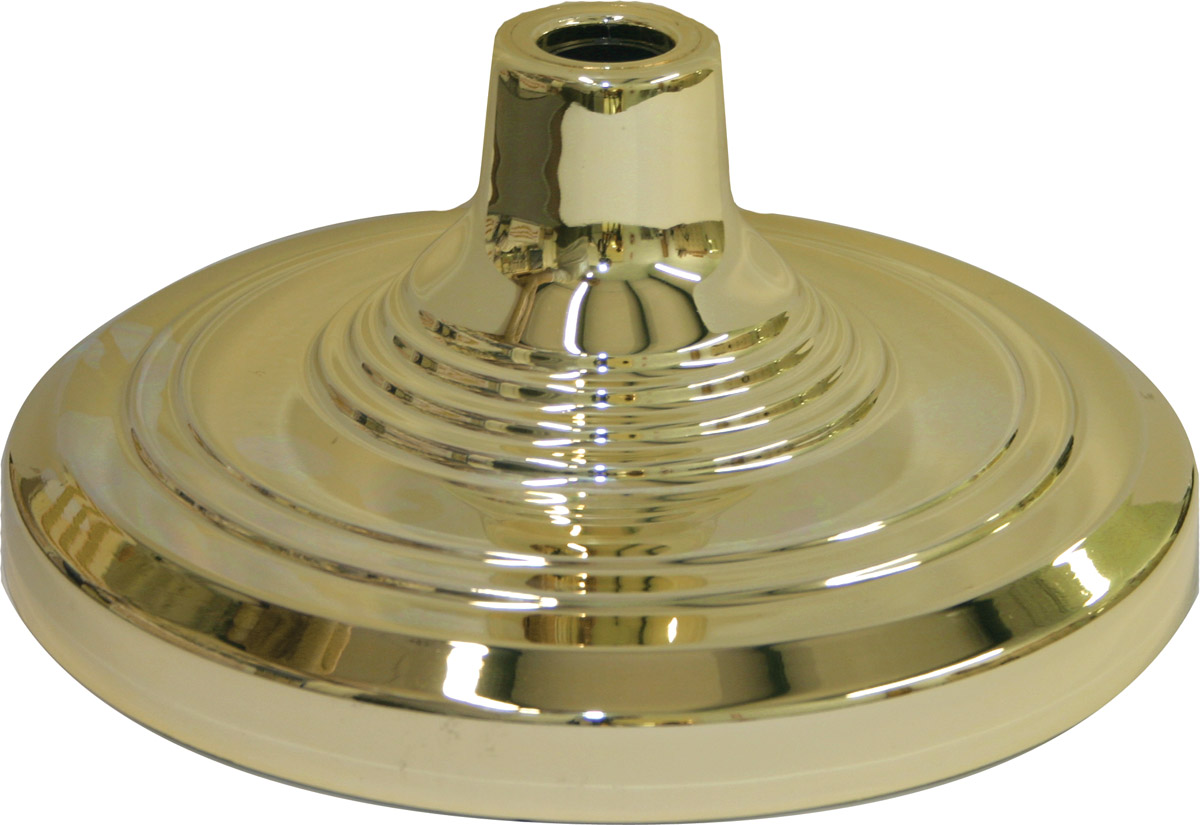Let’s get this out of the way, when asked to formally post the colors in stands outside, don’t. Just don’t do it. Let’s look closely.
Most every colors presentation should not be a posting. Posting the colors is for a formal situation and an outside ceremony either should have the color guard itself post (standing off to the side) or just enter, formally present for the anthem, and then depart without posting the flags. This type of presentation is called a Show-n-Go and should be the most common sequence for the color guard. See All About Posting and Presenting the Colors.
Outside? Pre-Post.
Every public event should have an American flag displayed somewhere. Since the ceremony is outside, is there a flagpole nearby? If so, that requirement is covered. If not, you may want to pre-post an American flag with some heavy weight around the stand. Having a color guard come in to formally present and then leave is perfectly acceptable.
 Low-neck flag stand |  High-neck flag stand |  Back yard umbrella stand |
The trouble with the low-neck stand is that it does not adapt well to being outside, even if heavily weighted, since there is little support for the staff. This can be remedied by adding a tube (see Color Guard Flag Stand Problems Resolved). The high-neck stand has a bit better stability, but still cannot handle wind gusts. What may be best is a backyard umbrella stand that can be filled with quite a bit of sand.
Weights
The photo at the top is the weight and stand system used in and around Washington DC. This particular photo is of President Kennedy’s grave at Arlington National Cemetery where the flags are posted for the day to commemorate his birthday.
Even better. Years ago, the 3rd US Infantry, The Old Guard, did wind tunnel tests using the high-neck stands and placing two 45-lbs barbell plate weights over the neck. It looks neat and clean and provides a good base to support the flag in windy conditions.
Fringe and Streamers
For the preposted flag… No fringe. Fringe frays easily. Fringe attached to the American flag goes against the Flag Code anyway (see Flag Fringe and Finial Theory). An embroidered rayon banner material will be destroyed in windy conditions. Use nylon, 2-ply poly or Supratex. Also no streamers, for the same reason: once they get frayed a bit by the wind, they turn into a ball of thread. And they bleed if it rains.
DeVaughn Simper, Vexillologist (Professor Flag), contributed significantly to this article.


Comments 6
Hello, we are doing a Presidential Inauguration for a university (not a military or gov’t event). There will be international flags brought in and set in flag stands around the Auditorium. I’m trying to see the correct order of the flags entering along with the National Anthem.
My question is, what order do they need to happen?
1) USA flag enters, gets placed in flag holder
2) National Anthem while they stand with the flag
3) Other countries flags enter after National Anthem and get placed around room
Is that correct or should this be in a different order?
Thank you so much for your help!
Author
Ma’am,
The order of the flags is US and then all other foreign national flags in alphabetical order in English.
Playing/singing all of the national anthems for the posting of each flag would be quite time consuming, which is probably why you are thinking of just posting the US in the stand and then after the Star-Spangled Banner, having the rest of the flags enter and get posted. I understand the thinking here, but may I suggest another option?
Bring in all of the flags in the order I mentioned above, have the bearers march to front and center facing the audience, play the Star-Spangled Banner, and then have the bearers move to their stands, post the flag, and then depart. None of the national flags would dip for any national anthem (if you decide to play others). This would provide the required honors to all of the national flags and still be simple.
I’m also sending this to your email in case there is more information that you need to provide and/or time constraints.
Hello, My name is Valerie, and I saw a Presser of Mr. Biden; standing at a podium, acting-out words, in front of gold-fringed flag, with red and white tassels. I have some knowledge about the gold-fringe meaning, but the red and white tassels are new. Any idea what those foreign tassels represent?
THIS in My Our American Flag
Author
Ma’am,
Please read .
DM
Drill Master,
I am the Army ROTC SMI( Senior Military Instructor), and I have to do a TriMilitary Color Guard between two universities. What kind of advice could you give?
V/r
MSG Jeffery L. Campbell
Senior Military Science Instructor
University of Wisconsin- Madison Army ROTC
1910 Linden Dr., Madison WI 53706
3rd Brigade ROTC
Author
MSG Campbell,
Army is the senior service, so TC 3-21.5 applies. Your right rifle guard, US color bearer, and Army departmental color bearer will be Army ROTC cadets, second senior service departmental/organizational color bearer, and then third senior color bearer. The left rifle guard is the second senior service cadet.
Staffs must all be equal in length. If Midshipmen are part of the color guard, they are only authorized to carry the 4’4″x5’6″ color mounted on 9’6″ staff. That means everyone must carry the same size flags and staffs.
If one service does not have battle streamers, none of them service colors can have them mounted. The red, white, and blue cord and tassels is authorized for the national and the USMC color should have the maroon and gold cord and tassels mounted as well (in place of the streamers).
Please let me know if you have any further questions. I shoot you an email.
DM